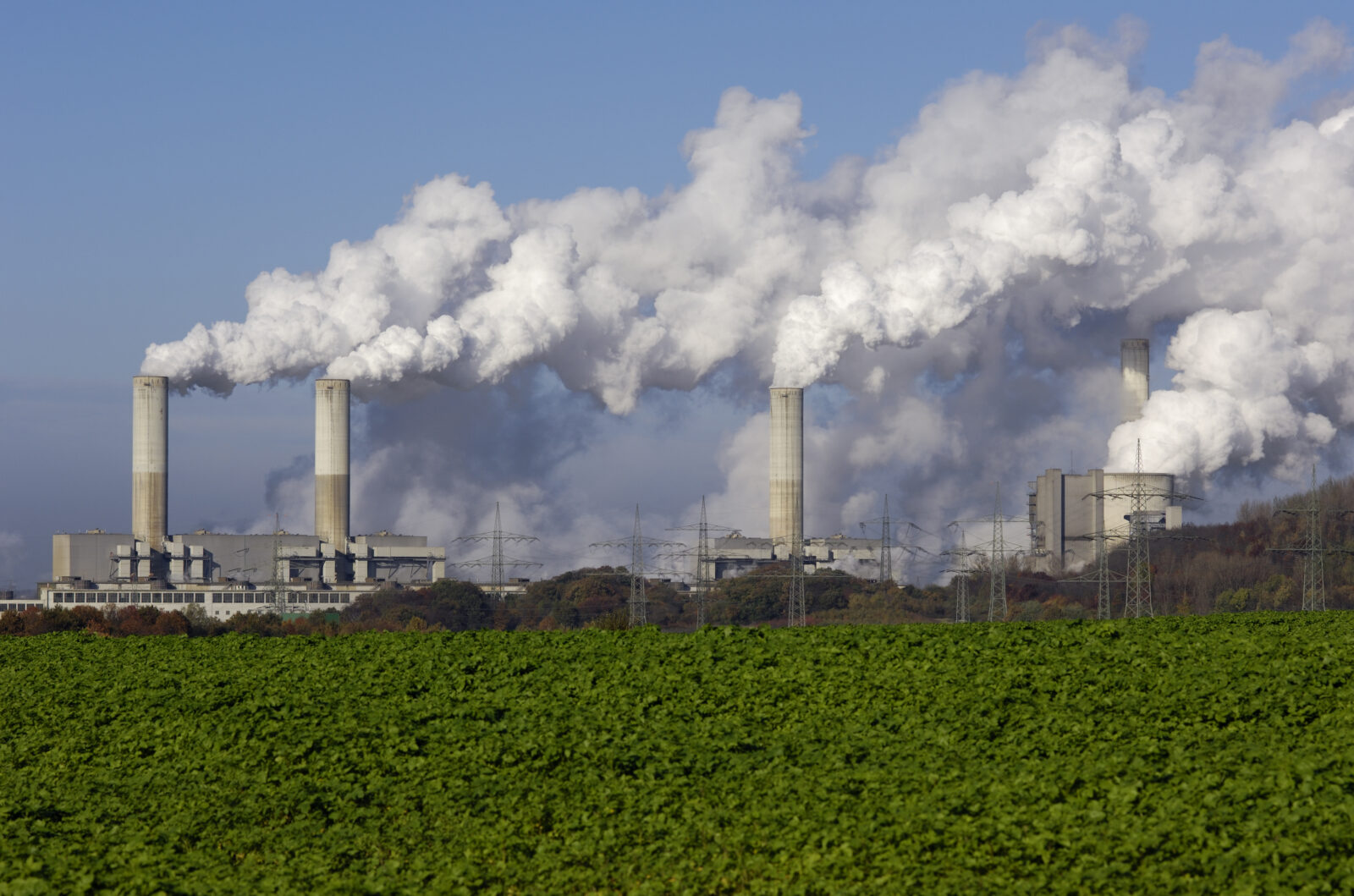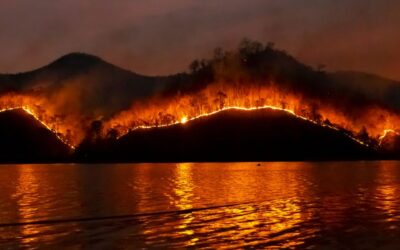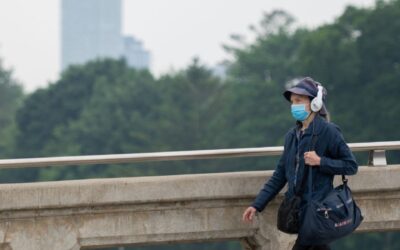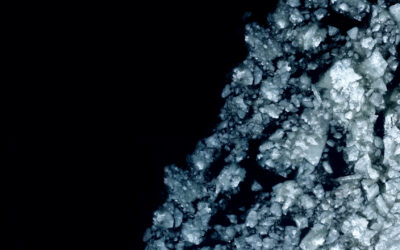Originally published in The Globe & Mail
One of the images from 2021 that will stick with me – and with a lot of Canadians – is that of the residents of Lytton, B.C., loading up their cars and fleeing as a wildfire engulfs their town. For three terrifying days before the fire, this tiny town on the Fraser River set records for the highest temperatures ever recorded in Canada. Scientists have since confirmed that this heatwave would have been “virtually impossible” without climate change.
From cyclones in Indonesia to deadly flooding in Germany, devastating hurricanes in the U.S. and heat domes and atmospheric rivers in British Columbia, carbon pollution and the extreme weather it’s causing are making the suffering we saw in Lytton last summer much more common.
As dramatic as these incidents were, they’re unfortunately nothing new. Pollution and the havoc it creates have been a recurring theme throughout human history. In ancient Sumer, over-irrigation created salt pollution in the soil, which archeologists believe led to that civilization’s decline. Sewage has caused deadly typhoid and cholera outbreaks. Chemicals such as DDT have killed wildlife and threatened human health before being banned. And air pollution around the world is still responsible for millions of premature deaths each year.
For more than two decades I’ve researched and written about the link between pollution and human health. I’ve created campaigns to get hormone-disrupting, carcinogenic chemicals out of baby bottles and kids’ toys. I’ve even conducted experiments on myself to make the story personal and connect it to people’s daily lives. Most recently, I’ve been investigating the extent to which microplastics – with all of their nasty chemical ingredients – are being absorbed into our bodies. I currently lead the country’s biggest climate change research and policy organization to help tackle what is arguably the world’s most serious pollution problem.
The one thing all of this has revealed is that it’s only when the effects of pollution start hitting close to home that people become truly concerned and demand action from their governments. When parents realized that BPA was in the bottles they used every day to feed their vulnerable newborns, they demanded – and got – a foot-dragging federal government to classify the chemical as a toxin to protect Canadians’ health.
Now that extreme weather caused by climate change is regularly harming communities, people are demanding action to reduce greenhouse gas emissions. And make no mistake, once people get riled up, change will happen, as it has with even the most entrenched interests. To name but one example, once the link between talc and ovarian cancer became clear, consumer goods giant Johnson & Johnson was forced to pull its iconic baby powder from the market.
But like all things in life, direct, personal experience is often the best teacher. Despite knowing a lot about the consequences of pollution, it’s with considerable embarrassment that I have to confess I didn’t really understand these effects I had so often written about until my own diagnosis a few months ago.
Like almost 200,000 other Canadians in 2021, I got a call from my doctor telling me I had cancer. In my case the thyroid cancer is slow-growing, and because I don’t have any symptoms, the surprise of it hit me like a ton of bricks.
My first thoughts, of course, went to dark places. I immediately started to worry about life insurance and whether my wife would be able to pay the mortgage if anything happened to me. Dropping “oh, and by the way, I have cancer” into casual conversation makes talking about it difficult. The language we use to discuss cancer often glosses over the enormous distress experienced by patients and their families. I’m luckier than most: The kind of thyroid cancer I have is more easily dealt with through surgery, and though the odds of recurrence are high, the incidence of mortality is quite low.
One of the questions you start to dwell on when you’re diagnosed with cancer is “Why me?” Thyroid cancer is one of the types of cancer linked to hormone-disrupting pollutants in the environment. A recent publication makes the point clear: In addition to genetics and lifestyle, a full two-thirds of all cancers are environmentally linked in some way. One of the chemicals scientists believe may be driving thyroid cancer rates is flame retardants, commonly found in electronics and upholstered furniture – one that I’ve found in my own body in the course of my research.
What a perverse situation we’ve created for ourselves. Millions of us around the world are suffering from diseases caused or at least made worse by pollutants that were originally created in an attempt to make our lives more comfortable. Rita Banach, a former president of Thyroid Cancer Canada, and someone with whom I’ve worked over the years to get carcinogenic ingredients out of cosmetics, sums up the frustrations many of us feel.
“So many chemicals are put into consumer products or released into the environment, then questions about their safety are only asked later, once we’re all exposed,” she said. “This has to stop. We need to put the pollution genie back in the bottle.”
The real question in this continuing battle against pollution is not whether the human race will survive. Contrary to the fiery apocalypse featured in the allegorical climate change movie Don’t Look Up, it will. But how many casualties will there be before we finally learn from our mistakes?
For some pollutants, such as the hormone disruptors linked to certain cancers, our respective biologies are contributing to susceptibility. In terms of breast cancer, for example, it’s now clear that those with certain inherited genes are at higher risk of developing the disease. Tom Zoeller, an endocrine and thyroid specialist and professor emeritus at the University of Massachusetts, told me, “I have no sympathy for the notion that cancer is a random event. Take smoking as an example. Only 11 per cent of smokers get lung cancer. Is that random? No way. It’s genetic predisposition.” Though the underlying genetics of thyroid cancer are not well understood, I guess the inescapable conclusion is that my thyroid is weaker than most.
The casualties of climate-changing pollution are somewhat easier to predict. Those who are already vulnerable in our society – including the elderly, the poor, the racialized and Indigenous communities – are far more likely to suffer from extreme weather. Among the 595 people killed during last summer’s heatwave in B.C., many were elderly citizens.
I’m headed back for cancer surgery in late January. I’m hopeful it will go well. But what’s really required to keep me, my family and all Canadians safer in the long term is some significant political leadership in 2022. The federal Liberals were recently re- elected on what is arguably the most comprehensive pollution-fighting platform in Canadian history, ranging from a pledge to ban certain types of single-use plastics to modernizing the Canadian Environmental Protection Act, curtailing toxic pollutants, historic cuts in carbon pollution and investments in climate change adaptation.
None of us can avoid or outrun pollution’s deadly effects on our own. It’s only through working together that we can protect ourselves and future generations from more unnecessary suffering.








